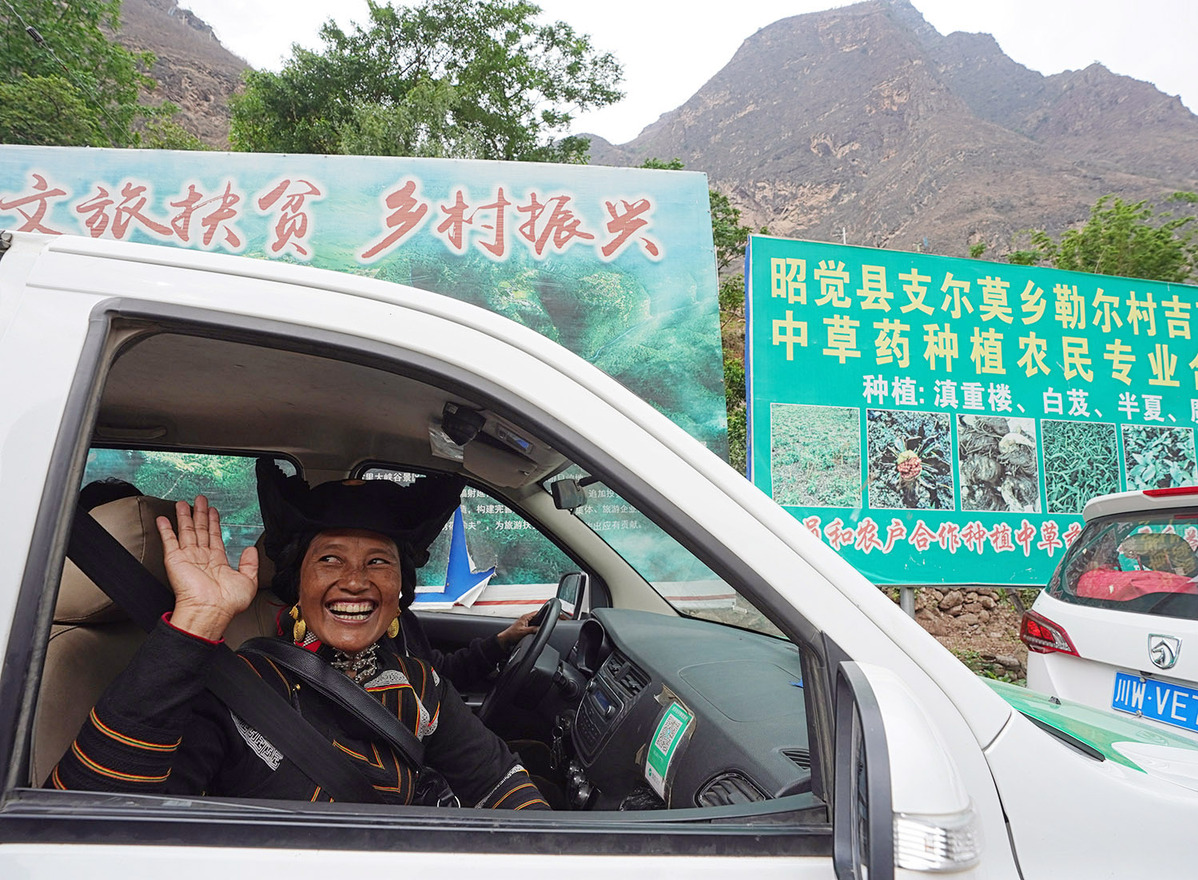
From People’s Daily app.
And this is Story in the Story.
"Fighting poverty with culture" refers to supporting the country's intangible cultural heritage. In 2019, thanks to the Ministry of Culture and Tourism, over 2,000 intangible cultural heritage workshops were built around the country, serving as a driving force for more than 2,200 projects.
The workshops have trained nearly 180,000 people and provided job opportunities to about 500,000 people, thus lifting over 200,000 registered poor families out of poverty.
China’s vice minister said that combating poverty through developing local tourism has accounted for 17 to 20 percent of the country's overall poverty alleviation efforts, and in some areas, the number has even exceeded 30 percent.
As an emerging industry, tourism boasts a huge market and strong vitality and can pump fresh blood into many other industries. Therefore, some poor areas with tourism resources have already stepped up their efforts to capitalize. Their efforts are a case in point of implementing targeted poverty-reduction measures with Chinese characteristics,
Today’s Story in the Story looks at how China’s poverty alleviation efforts continue to save communities across the nation.

A resident of Atuleer village heads to her new home located in the county seat of Zhaojue, Sichuan province, on May 12, 2020. (Photo: China Daily)
Eighty-two households in the cliff-top village of Atuleer in Sichuan Province's Zhaojue County were preparing to move to new apartments in the county seat as part of the nation's poverty relief program.
"The government has bought new furniture for each of the households in the new homes. We only need to take clothes and quilts there," Mou'se Subure, a young man of the Yi ethnic group, said about the planned relocation.
The village, atop a 1,400-meter cliff, garnered nationwide attention in 2016 when a Chinese newspaper published a collection of photos featuring students scaling the cliff via an 800-meter zigzag network of rattan ladders with no railings-their only link to the outside world.
Villagers used the ladders to reach the nearest market several kilometers away once a week to sell peppers and walnuts, and to buy necessities.
Soon the governments of Zhaojue and the Liangshan Yi autonomous prefecture spent $141,000 to add a steel ladder with a handrail that has cut travel time to the nearest town from three hours to one.
Now, a total of 84 households-a majority of the villagers-will settle in five residential quarters in the county seat 75 km away. The members of two households were so excited about their new homes, they moved on Monday, one day ahead of schedule, said Ahke Jiushe, an information officer of the county government.
The relocated villagers will live in new apartments that have kitchens and toilets with running water.
"We used to live in adobe houses and have never seen such nice apartments near schools and hospitals," Mou'se said.

Villagers take a group photo before heading to their new homes on May 12, 2020. (Photo: China Daily)
The 84 households have very limited means, with an annual per capita income of about 3,000 yuan.
The new apartments come in models of 50, 75, and 100 square meters, which will be assigned depending on the number of people in the household, said Ahke Jiushe. One person is entitled to 25 square meters, he said.
The cost to own the apartments is 2,500 yuan per person-a family of four would pay 10,000 yuan to own an apartment of 100 square meters. The market price per square meter of housing in the county seat ranges from 3,000 to 6,000 yuan, he added.
The villagers are benefiting from the government's tailored poverty relief policies.
In 2017, China was concerned that the Atuleer villagers were too dependent on the rattan structure. Sichuan Province deputies were reminded that the entire process of poverty reduction required tailored relief policies and precision measures, and sometimes patience and accuracy such as "doing embroidery.”
After the village became famous, tourists flocked to see the rattan ladders, and some tried to climb them.
After the 84 households move, Atuleer will see new tourism development. A cable car will be installed to transport tourists to the village and nearby canyons will be developed, the county government said.
Some 30 better-off households will remain in the village and work in the tourist industry, running rural inns, showing tourists around and carrying bags to make money.
(Produced by Nancy Yan Xu, Lance Crayon, Brian Lowe and Da Hang. Text from China Daily.)


